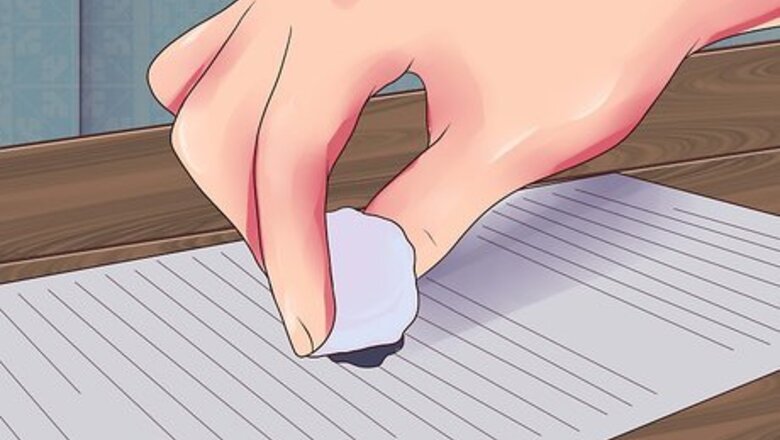
views
Removing Ink from Inkjet-Printed Paper
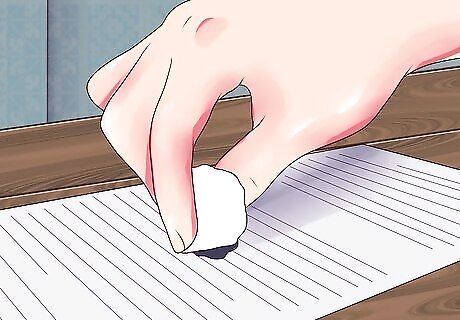
Dab fresh ink with a cotton ball. Inkjet (or "bubble jet") printers spray droplets of ink onto the paper, and depending on the type of ink used and the printer, this ink may remain wet for several minutes. Immediately after printing, you may be able to pick up a small portion of the ink using a cotton ball. This can make the next step easier, even if the ink is still mostly visible on the paper. Do not rub the paper vigorously, as it may rip. Most home and office inkjet printers use aqueous inks, typically the cheapest option, which take a few minutes to dry unless the printer includes a heating mechanism.
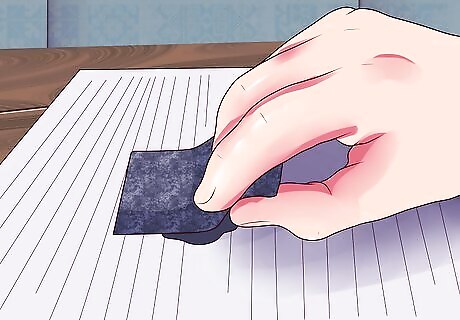
Scrape the paper gently with sandpaper or a razor blade. Sometimes, the ink will remain mostly on the surface of the paper. Scrape the top level of paper off using a razor blade or ultra-fine grit sandpaper. Scrape gently in one direction only, towards yourself. This has a greater chance of success if you try this immediately after printing. Thicker paper will also help, as it can withstand additional scraping. UV-cured inks, which tend to be more expensive and durable, are quickly bonded to the paper before they have a chance to soak in. They may be easier to scrape off than other types of printer ink.
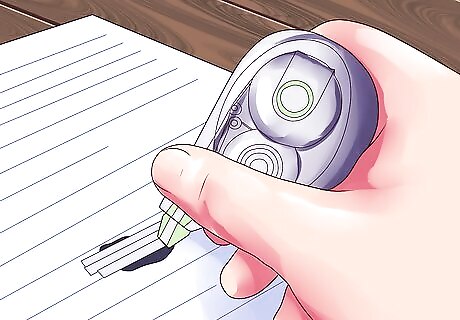
Use whiteout. If the above methods do not work, you may have to give up on removing the ink. Apply whiteout instead and allow it to dry before writing or drawing over it.
Removing Ink from Laserjet-Printed Paper

Apply acetone with a cotton ball to smudge the ink. Laser printers fuse the ink (technically "toner") to the paper fibers before the paper is ejected, so the ink is already dry and bonded by the time you see it. Acetone, also sold as fingernail polish remover, can be applied with a cotton ball to dissolve some of the ink into a liquid again. This is not a perfect method, but may be the only one easily available. The paper will end up grey and smudged, but new printing or writing should be clearly visible on top of the smudge. Keep acetone away from heat sources, as it is flammable. If you feel dizzy from fume inhalation, move to fresh air. If you get acetone on your skin, eyes, or mouth, immediately rinse with lukewarm water for 15 minutes, without pausing to remove contact lenses.
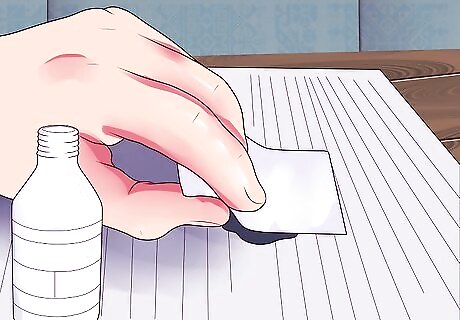
Rub the acetone in once with tissue paper. Rubbing the acetone over the ink greatly increases the amount of ink removed, although about 1/3 of the ink will probably remain as a grey smudge and faint image. Rub tissue paper only once across the affected area, since additional rubbing may tear the paper and does not noticeably increase the amount of ink removed.
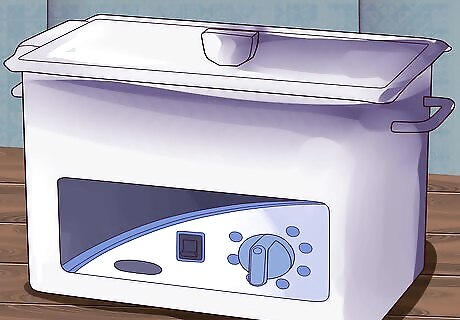
Put the acetone-soaked paper in an ultrasonic cleaning machine (optional). Ultrasonic devices use high-frequency sound waves to agitate contaminants and break them off of surfaces. This can be used to remove even more of the ink smudge, although the paper will still not appear as new. However, while these machines are sold for household use, they range from $150 at the cheapest, to several thousand dollars for higher-capacity, stronger versions.

Look up the latest news on laser "unprinters." These devices uses short pulses of laser light to burn off laser-printed inks, but as of September 2014, they only exist as theory or prototypes. This may change, however, so search online for news about "unprinters" or about the company "Reduse." These devices will not work on inkjet-printed paper.
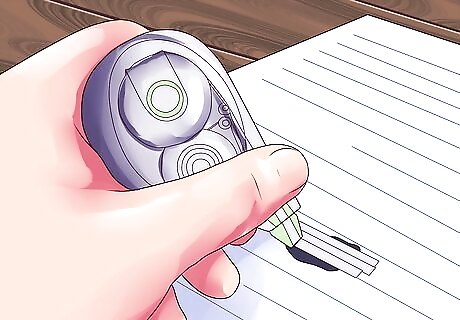
Use whiteout. If none of the above methods work, try using whiteout instead. This will leave a visible raised, white surface on the paper, but once dry it will allow you to write or draw over it.




















Comments
0 comment